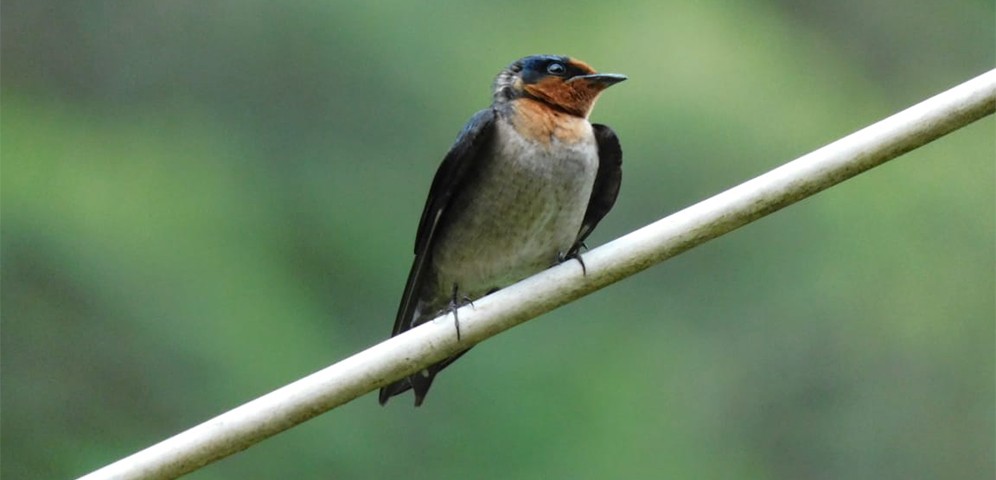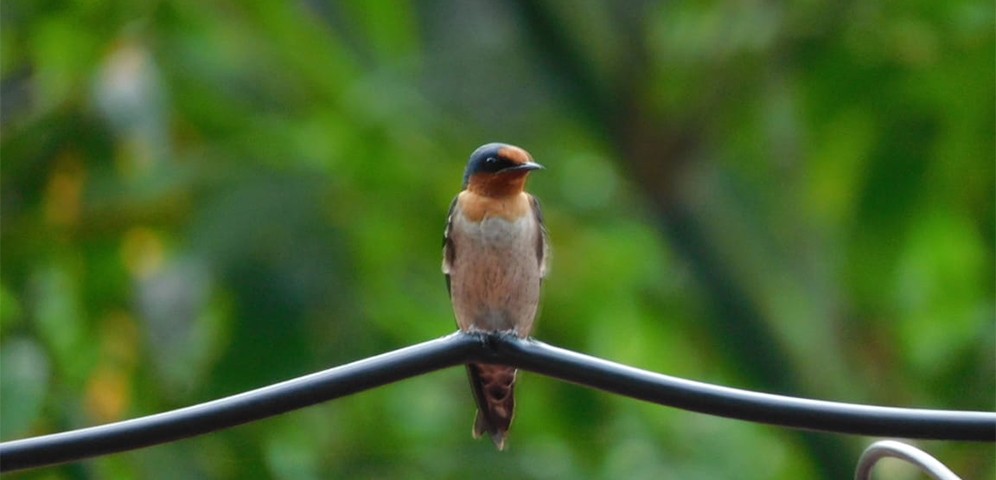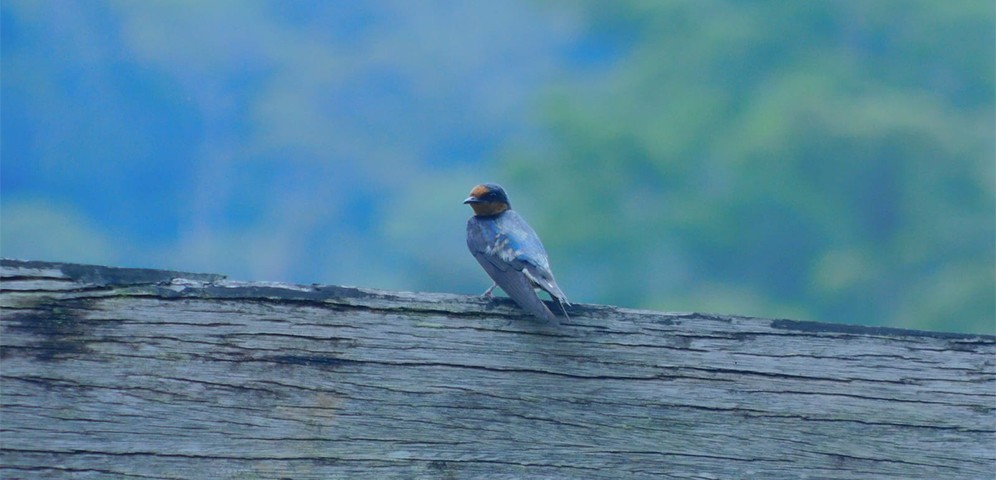09 Oct, 2023
GRACEFUL GREETINGS FROM PACIFIC SWALLOW
BIODIVERSITY
A beautiful morning greeted the Post-Release Monitoring (PRM) team, who were busy carrying out routine camp cleaning tasks. Unexpectedly, a guest appeared on the cable of the room's ceiling, moving quietly, and reluctantly from his comfortable place. The guest's presence surprised us as he appeared to have entered without our permission.
Although being surprised our PRM crew tried to keep their chilled so as not to upset the uncommon guest. We carefully captured and identified the type of bird on the cable. We identified the bird as a pacific swallow (Hirundo tahitica) after closer inspection.
The pacific swallow is a tiny bird that belongs to the Hirundinidae order. According to the International Union for Conservation of Nature and Natural Resources (IUCN), this birds are classified as Least Concern, or "low risk." Furthermore, its protection status is Appendix III under the Convention on International Trade in Endangered Species (CITES), which indicates that it can still be traded in limited quantities.
The pacific swallow is a grain-eating bird identified by its beak and claw shape. This bird builds nests from of tree branches that serve as a location for them to relax, incubate, hatch, and keep eggs, and provide refuge for their infant.
This diurnal animal's predators include rats, cats, ferrets, dogs, eagles, monitor lizards, and snakes. Pacific swallow prefer to live in flocks and seek for a safe and pleasing nesting location to avoid predators.
This visitor's visit to the camp provided us with an opportunity to reflect on how we may be more environmentally responsible. This is also a reminder to be more aware of the existence of birds, their function in the environment, and their importance of preserving their natural habitat.
Text by: PRM Team at Lesik Camp, Kehje Sewen Forest, East Kalimantan






